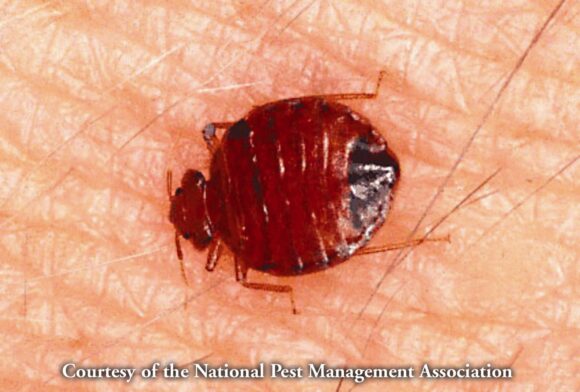 An alarming invasion of bed bugs in homes, hotels, schools, hospitals and other facilities has led to a renewed call for lifting of a government ban on a pesticide once used to combat the bugs and moves in several states to require property/casualty insurers to cover the costs of clean-up.
An alarming invasion of bed bugs in homes, hotels, schools, hospitals and other facilities has led to a renewed call for lifting of a government ban on a pesticide once used to combat the bugs and moves in several states to require property/casualty insurers to cover the costs of clean-up.
The resurgence of the critters has also prompted renewed research into the best treatment and prevention methods.
Though around for centuries, by the mid-1900s bed bugs were almost completely eradicated in the U.S. due to a variety of pest control products used to treat infestations. Some now question whether this latest bed bug tipping point can be contained.
According to Missy Henriksen, vice president of the National Pest Management Association (NMPA), there are a variety of reasons for the dramatic increase in bed bugs, including increased travel and mobility of society. Other factors include changes in pest control, resistance towards pesticides, and changes in the pesticide application process.
The NPMA and the University of Kentucky studied what has been done on bed bugs to date. Released last summer, this study found that 95 percent of pest management professionals reported treating bed bugs in the past year. In 2000, that figure was below 25 percent.
“We also found as part of that, that bed bugs certainly aren’t just in beds any longer,” said Henriksen. “We’ve seen news stories that indicate that as well. Bed bugs are being found now in schools, in movie theaters, in office buildings, in hospitals and medical facilities, they are being found in cars. Anywhere where people are, you will find bedbugs. Bed bugs need people for their very survival. They are hitchhikers and they will travel with people on their belongings and take up residence in new locations.”
They are also in municipal buildings. Firefighters in Des Moines, Iowa last month called in a bed bug-sniffing dog that found bugs in an office, on two chairs, on stools and on four mattresses at Station No. 4. The firefighters, who eat and sleep at the station during their 24-hour shifts, said they worried about accidentally taking some of the little pests home.
Chemical Controversy
Last month, a two-family Ohio house was destroyed when a heater being used to kill bed bugs set a carpet on fire, according to officials. The exterminator blamed an equipment malfunction for the fire.
The fire renewed a controversy over the use of a pesticide, Propoxur, which has been successful in treating bed bugs. The product was taken off the market in 2006 by the Environmental Protection Agency (EPA) because of health risks, including nausea and vomiting experienced during exposure to the product. The EPA says it is a danger to children’s nervous systems.
At a press conference in Ohio, Republican U.S. Rep. Jean Schmidt and Democratic state Rep. Dale Mallor called on the EPA to solve the growing problem of bed bugs and allow Propoxur back on the market.
“The loss of this home, in my opinion, is the result of the EPA’s inaction to approve of a product that is effective at controlling the bedbugs,” Schmidt said.
Oho officials have twice requested an exemption for the state from the federal ban on Propoxur, but the EPA has thus far refused to grant the exemption.
Bed Bug Legislation
To address the issue, the federal government convened the second annual National Bed Bug Summit in Washington, D.C. in February. Part of the agenda included what states and cities are doing to control the problem and the effective use of heat and non-chemical treatments.
Eleven states are considering bed bug legislation this year. Maine adopted a bed bug related law last year. New York is considering requiring insurers that underwrite property/casualty policies in the state to cover costs associated with bed bug infestations.
Maine’s bed bug law requires a landlord to inspect a unit for bed bugs within five days of being notified by a tenant of an infestation possibility. Within 10 days of determining an infestation is present, the landlord must contact a pest control agent and take reasonable measures to treat the infestation. The pest control agent must carry liability insurance that is current and effective at time of treatment.
In addition, before a unit can be rented, a landlord has to disclose whether a unit is currently infested with or treated for bed bugs. The landlord has to provide, if requested, information as to when the unit or adjacent units were last inspected for and found to be free of bed bugs.
South Carolina enacted the Bed Bug Prevention and Sanitation Act and Hawaii added a bed bug question to the state’s real estate disclosure form.
Larger municipalities such as Detroit, San Francisco and New York City are also reviewing the issue.
This is part 1 of a three part article. Part 2 will be posted on Thursday, June 16.
Was this article valuable?
Here are more articles you may enjoy.


 Trump Sues BBC for $10 Billion Over Documentary Edit
Trump Sues BBC for $10 Billion Over Documentary Edit  J&J Talc Jury Awards $1.56 Billion to Asbestos Cancer Victim
J&J Talc Jury Awards $1.56 Billion to Asbestos Cancer Victim  Rare Weather Warning Issued as Strong Gusts Fuel Colorado Wildfire Threats
Rare Weather Warning Issued as Strong Gusts Fuel Colorado Wildfire Threats  Jump Trading Faces $4 Billion Terraform Administrator Suit
Jump Trading Faces $4 Billion Terraform Administrator Suit 